A wah-wah effect is a sound effect that enables you to alter the tone of your guitar dynamically. Wah pedals are designed to make this kind of effect. The best wah pedal helps create that classic talking sound that you have probably heard from almost any electric guitar player. Generally, by pressing this pedal, the guitarist changes the frequency and the EQ settings.
The wah-wah is a classic rock music effect used by various musicians for over 50 years. It became popular in 1969 when Jimi Hendrix used the wah pedal to achieve a brand new guitar sound. The pedals have quickly gained their popularity thanks to their unusual sonic characteristics, and the wah-wah effect still remains one of the most recognizable sound effects in the history of music. The wah-wah pedal is capable of making any guitar solo more expressive. It’s also a versatile tool that works well with a wide range of musical genres, from disco to metal.
The wah pedal is used by a large number of artists. For example, Jeff Beck, Zakk Wylde, Kirk Lee Hammett, John Petrucci, Slash, Kenny Wayne Shepherd, Mick Boxing, Tom Morello, etc. It also can be heard in the songs of such iconic bands as The Beatles and AC/DC. In modern music, it’s frequently used by Linkin Park.
Our article will help you opt for the best wah pedal since this choice may be hard considering the number of both quite average and high-quality wah pedals offered by multiple manufacturers. Plus, our buyer’s guide will reveal some important points towards what the electric guitar effects pedal is capable of and how it can help in upgrading your guitar playing experience.
Wah Pedal Reviews
Dunlop GCB95
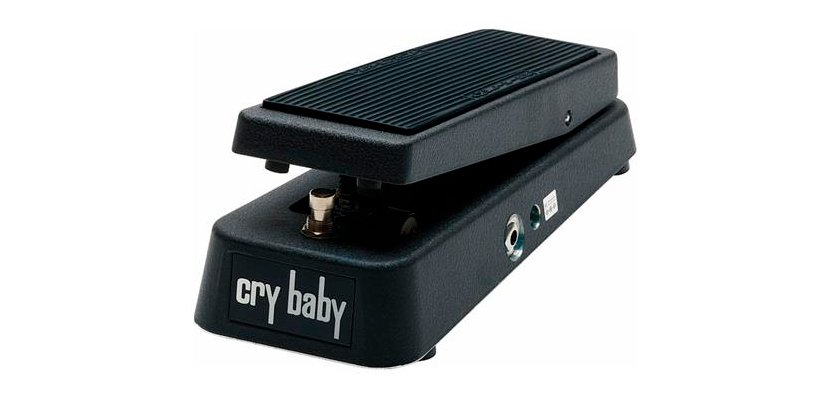
The Dunlop GCB95 is a Cry Baby wah pedal. It has a basic design with a diecast construction. It’s very hefty, weighing 3.7 lbs, but it can certainly take some hard usage and offer years of dependability.
The 100k Ohms Hot Potz potentiometer will let you create the quick, sharp wah sound effect. By moving your foot back and forth on the pedal, you can alter the wah effect. You will get some more treble, and by releasing it, you will achieve some more bass.
In terms of tone, the GCB95 delivers the original Cry Baby tone, making it one of the most suitable pedals for recreating Jimi Hendrix’s sound. The Cry Baby GCB95 is also related to some of the other legendary rock musicians, like Buddy Guy, David Gilmour, so it also works great for covering their songs or producing similar sound.
Note that you won’t get the adjustable sweep or boosts with this pedal: it’s quite minimalist since it doesn’t provide any control knobs. It only has an input and output, and a socket for the power adapter.
However, the GCB95’s ensures quite an aggressive sweep which makes it one of the best wah pedals for cutting through distortion. Since the GCB95 is not a true bypass pedal and provides no adjustability, its voicing is actually subject to the personal taste.
The pedal has 10 x 4 x 2-1/2 inches in size. It can be powered by the Dunlop ECB-03 AC adapter or the Dunlop DCB10 DC Brick power supply. It also allows for a stand-alone operation via the 9V battery.
Pros
- The pedal has easy battery access.
- The GCB95 is quite versatile in terms of applications: from the usage with a clean guitar solo to the usage with the distortion.
- It works great for most music genres.
Cons
- It doesn’t have the on/off switch, so it turns on and creates a sound every time you make a full step.
- The pedal is a bit noisy.
Video Dunlop GCB95
Dunlop 535Q
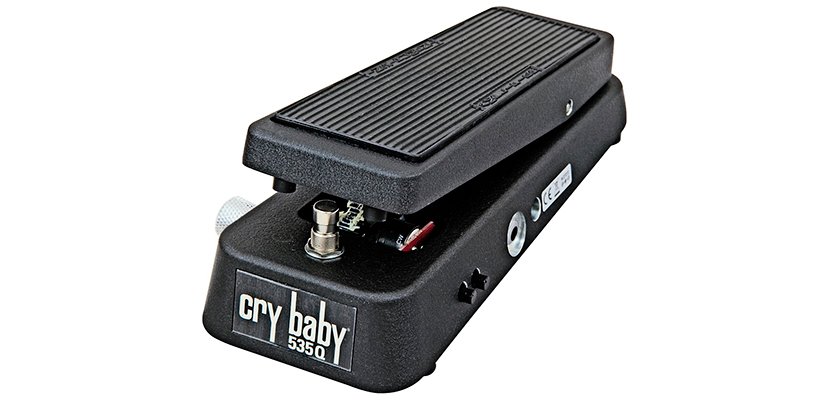
The Dunlop 535Q is a true bypass Cry Baby wah pedal that provides four control knobs. It features a classic Cry Baby design.
The wah range selector knob is located on the right side of the pedal and offers six wah ranges. You can use it to select the tonal range that will be the most suitable for the sound you need: turn the knob clockwise for the lower ranges and counterclockwise for the higher ranges.
The pedal has a volume control knob on the left side. It allows controlling the amount of gain. Turning it clockwise, you can increase your gain to up to 16 dB. Turning it counterclockwise, you will be able to decrease your gain to 0 dB.
On the pedal’s left side, you will also find the knob for Q adjustment. You can use it to control the sharpness of the bandpass. The lower Q settings will give you a more musical quality and won’t affect the tone as much as the high Q settings.
This guitar wah pedal from Dunlop also has an on/off boost selector, located on the right side of the unit.
In certain positions, the 535Q will provide an increase in a certain frequency. You can use this boost to add a sustain and create feedback of a desired tone. However, note that if you are going to use this pedal with a lot of distortion, the wah effect will not be very prominent.
The 535Q is 10 x 4 x 2-1/2 inches and weighs 3.7 lbs, being noticeably heavy. It can be powered via the Dunlop ECB003 AC adapter or a single 9V battery.
Pros
- The pedal delivers a truly smooth, clean sound.
- It’s capable of eliminating the distortion.
- The pedal’s custom circuitry allows the 535Q to consume less power.
Cons
- The pedal does produce some hum when engaged.
- The control knobs are quite delicate and don’t work stable.
Dunlop CBM95
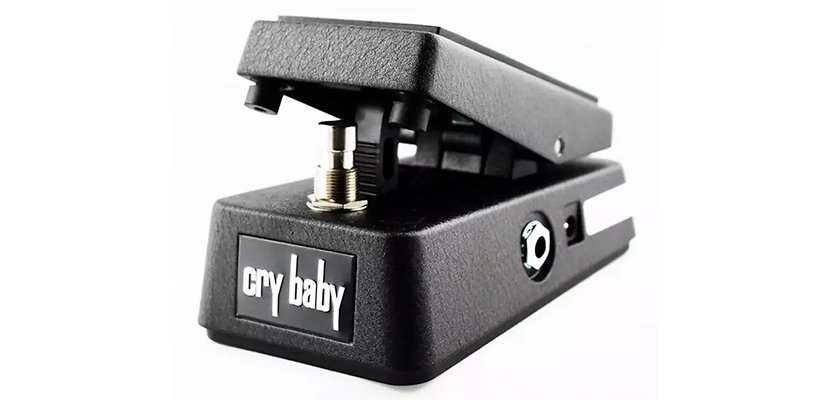
In the case if you don’t consider the wah-wah effect as one of the most important ones for your music, or just don’t want a bulky and heavy pedal, this model from Dunlop can be just what you need. It’s a mini wah pedal which is only 5.2 x 3 x 2.6 inches in size and will easily fit in a small pedalboard or a gig bag pocket since it’s half the size of a standard wah pedal. This pedal is made of metal (just like the full-sized Dunlop’s pedals) to provide increased durability but still weighs slightly more than 1 lb.
The CBM95 is a Cry Baby pedal with a true bypass switching. It may seem quite minimalist at first glance, but, surprisingly, it does allow for some adjustment despite the size: with this pedal, you can get both modern and more old-school sounding.
The internal voicing switch allows changing the pedal’s frequency range by choosing between 3 types of wah-wah effect. Switch it to H setting if you need a standard GCB95 Cry Baby sound. To achieve a more vintage, midrange-focused sounding, set the switch to M. Select L for the lower frequency range to get similar to Jimi Hendrix’s songs sounding.
The adjustable torque clutch, located at the heel of the pedal, allows adjusting the resistance: turn it clockwise to increase the resistance, and counterclockwise to decrease.
This Dunlop mini wah pedal is quite sensitive. When you gently push the pedal back and forth, the Cry Baby wah effect quickly alters the tone of your guitar.
The pedal can operate with the help of the 9V battery, the AC adapter (such as the Dunlop ECB003/ECB003EU), or the DC Brick power supply.
Pros
- In most cases, the wah-wah effect produced by this pedal is very natural.
- Being equipped with the Fasel inductor, the pedal ensures fat sound with a full sweep.
- It doesn’t change the dynamics of the music.
Cons
- The pedal loses to its full-sized analogs in terms of sound quality.
- The voicing switch is not easy to access since you will need to remove the bottom plate of the pedal.
Video Dunlop CBM95
Dunlop MXR MC404
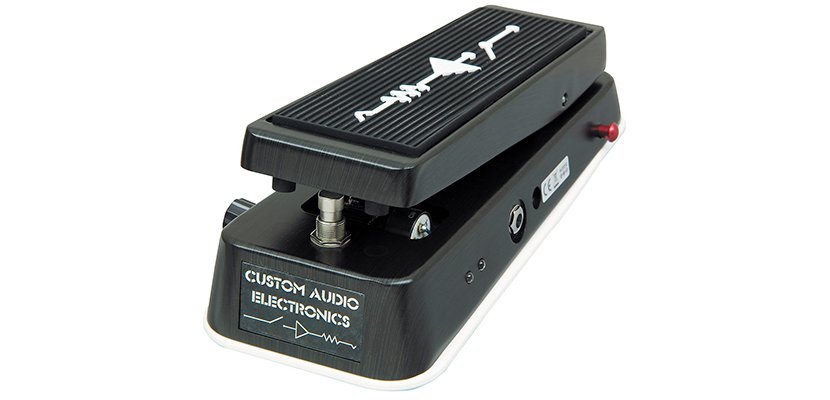
The MXR MC404 is the electric guitar effects pedal with two inductors (red and yellow) and a true bypass. It goes supplied with a CTS long-life low-noise potentiometer and with the convenient bright LEDs on each side to indicate the currently selected settings.
The pedal is equipped with some controls that allow for great flexibility. On the right side of the unit, you will find a boost volume knob that controls the amount of gain added by the boost switch and the inductor switch that toggles red/yellow inductors. On its right side, there is a boost switch that engages the boost level, set by the boost volume knob. The upper trimpot that controls the Q of the yellow inductor and the lower trimpot that controls the Q of the red inductor are both located inside the pedal’s bottom plate.
By pushing the boost switch (indicated by blue LED), you can boost your wah signal. The boost volume knob allows setting the desired boost level (up to +20 dB).
The tone changes significantly as you switch between yellow and red inductors, so it may seem as though you’re using two wah pedals in one. The yellow inductor provides a wider sweep range, accenting the high frequencies, and gives a more pronounced “quack” effect which is perfectly suitable for funk. The red inductor accents low and mid frequencies and provides a warmer sounding.
The MXR MC404 measures 6 x 3 x 2 inches and weighs 3.5 lbs. It can be powered by the 9V battery, the 9V AC adapter (Dunlop ECB003/ECB003EU), or the DC Brick power supply.
Pros
- All of the switches are very sensitive, requiring just a tap to turn them on or off.
- The pedal is designed with the low-noise class A amps.
- The sound remains rich whatever inductor is used.
Cons
- It requires a little bit more force to press the pedal than the other pedals.
- The pedal needs a lot of adjustments before using it.
Video Dunlop MXR MC404
Xotic XW-1
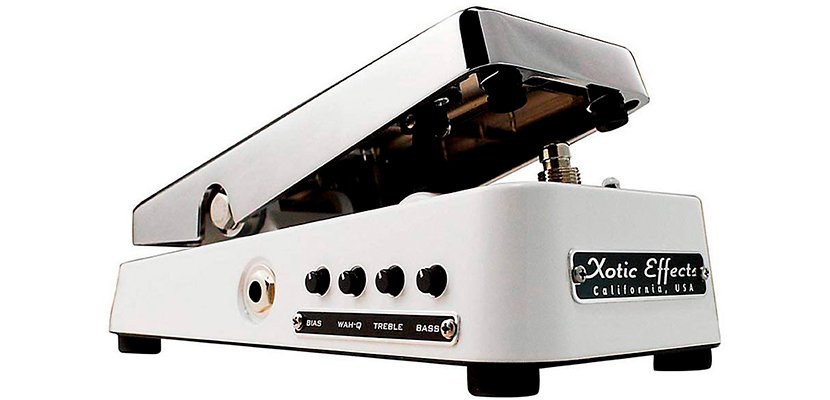
The Xotic XW-1 is one of the most universal and customizable wah pedals sinсe its four control knobs (Bias, Wah-Q, Treble, and Bass) allow achieving almost unlimited sounds.
By turning up the bias control, the pedal will get slightly more output, more enhanced bass frequencies, and a more pronounced wah effect. By loosening the bias, you will get a more vintage wah effect, with a clear and more transparent tone. The wah-Q control adjusts the width of the filter peak and the amount of the wah effect. The bass and treble controls are used to optimize the voicing of the pedal for different playing styles.
There is also a self-lubricating nylon bushing pivot that contributes to a quieter and smoother operation with an adjustable rubber stopper, located on the backside of the pedal, which allows adjusting the movable range of the pedal. The pedal torsion is also fully-adjustable.
The XW-1 uses a relay switch for a true bypass switching. This pedal also features a fuzz-friendly buffering circuit to ensure a great sounding wah tone with the fuzz pedals.
The convenient LED indicator is placed on the top of the pedal and illuminates red when the pedal is switched on and flashes when the battery power level is less than 50%.
With 8.27 x 3.94 x 2.64 inches of size dimensions, the XW-1 has a 20% smaller footprint than the other similar pedals. Having 2.16 lbs of weight, it’s also lighter than most of the other full-sized wah pedals.
The pedal can be powered via the 9VDC/5mA battery or with the help of the 9VDC AC adapter.
Pros
- All four control knobs are placed on the same side of the pedal for added convenience.
- The default sound of the pedal is very clear and natural.
- It doesn’t change the original volume of your guitar.
Cons
- It may be difficult for amateurs guitarists since the pedal needs a lot of adjustments.
- The controls for input gain are difficult to access.
Video Xotic XW-1
Morley VAI-2
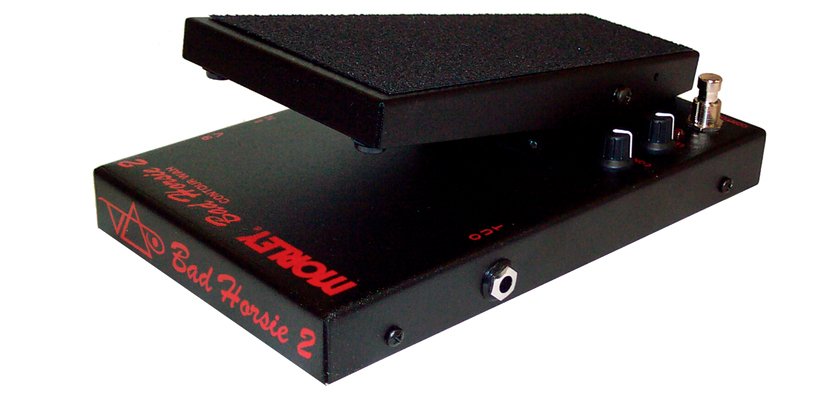
This Morley wah pedal is a Steve Vai trademark device that has three control knobs on the top panel. The Contour switch allows selecting a Wah mode (can be used to mimic a nasally vintage tone). With the Level switch (allows up to 15 dB of clean boost) you can adjust the output of the Wah in the Contour mode. The Contour Wah is designed to adjust the frequency of the wah in the Contour mode.
This model is also capable of providing a completely switchless operation: simply step on the pedal to engage wah and step off to go to bypass. Thanks to the spring-loaded switchless activation, you shouldn’t ever worry about such a situation when the pedal is still on when you switched it off, or when you accidentally hit the switch while playing. The internal trim pot may be used to adjust the Wah off time from 0 to 2 seconds.
The pedal has two LED indicators, located on its left and right sides. The right indicator glows red when the Wah mode is on. The left indicator lights up with red when the Contour Wah is on.
The pedal is 9.13 x 5.88 x 2.75 inches in size, being much thinner than the standard wah pedals and weighs 3.3 lbs. The manufacturer claims that using a non-regulated adapter can cause a low-frequency hum in your amplifier and recommends using only the Morley’s 9VDC 300 milliamps regulated adapter. You can also use the 9V alkaline battery instead of an adapter.
Pros
- The Quick Clip battery door allows for easy battery access.
- The Clear Tone buffer circuit provides a clean tone and keeps the signal level in both modes.
- The pedal features an electro-optical design that provides smooth pedal control without any unwanted noises.
Cons
- The Wah is automatically set to the Steve Vai’s specifications which is not suitable for everyone.
- It’s hard to get some classic vintage tones using this pedal.
Video Morley VAI-2
Sonicake 2-in-1 Pedal
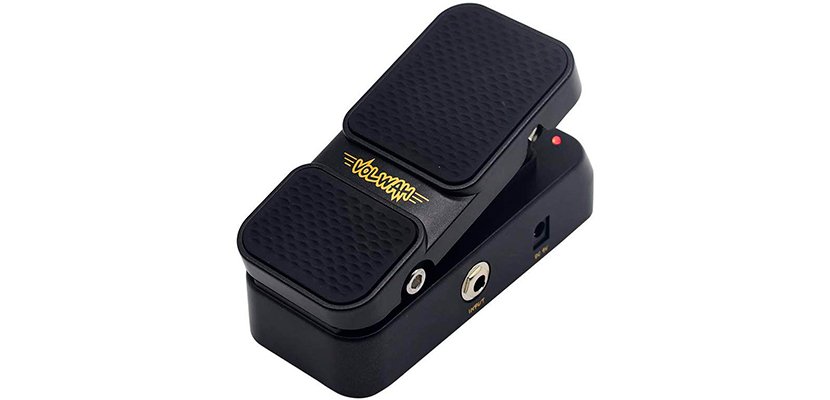
This bass wah pedal from Sonicake features an analog circuit that allows for a true vintage Cry Baby wah sound. Weighing only 7oz, the pedal has an extremely lightweight casing which is, however, yet quite robust and well-built being made of the impact-resistant ABS.
Its tiny size (6 x 2.7 x 2.4 inches) makes it a cheap wah pedal. It is also a 2-in-1 pedal that allows switching between ActiveVolume and Wah modes with the help of the hidden footswitch. The Volume part of the pedal in an active circuit which prevents the impedance mismatch issues. The Wah part of the pedal is dedicated to the classic Cry Baby sounding.
The two LED indicators show the working state of the pedal, indicating which mode is in use (the LED indicator turns red when you use Wah mode and green in the Active Volume mode).
The input, where you can plug in either your guitar or another pedal, is located on the left side of the unit along with the 9V DC where you can plug in your power jack. The output for the amplifier or another pedal is located on the pedal’s right side.
Pros
- The Cry Baby sound is dynamic and responsive.
- The pedal is highly versatile and flexible which means that it’s a great solution for musicians of all genres who need a great alternative to the universal full-sized pedals.
- The volume control is easy to sweep.
Cons
- The volume and wah effects can’t be used at the same time.
- The LED lights are difficult to see due to their positioning.
Video Sonicake 2-in-1 Pedal
VOX V847A
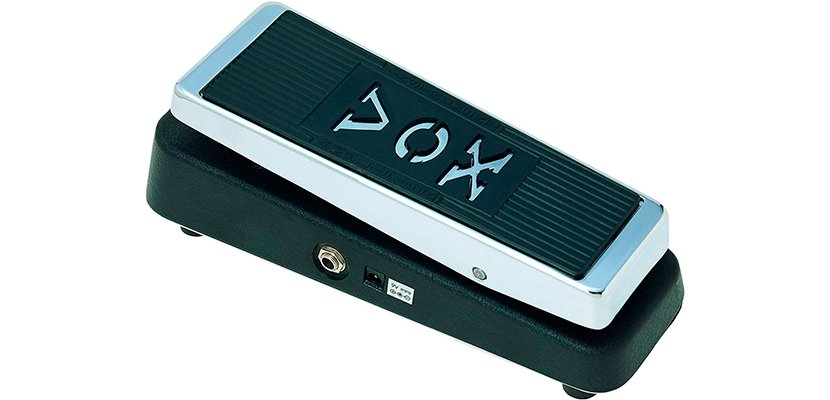
The VOX wah pedal specifications are based on the original VOX pedals from the 60s and 70s to bring an authentic style, with the redesigned inductor for improved dynamics and tone. It also offers a buffered input jack to preserve the unprocessed guitar tone when the pedal is not engaged. As a result, fans of various genres may benefit from incorporating this VOX wah pedal into their sound.
Everything was done by the designer to ensure that you could use this pedal to completely replicate Jimi Hendrix or Eric Clapton’s tunes. However, it’s quite universal in terms of music genres thanks to its constant and clean tone, so you can even use it while playing metal music without any doubts.
This pedal goes with the 9V DC battery but can also be powered via the AC adapter which is optional and sold separately. It has 4.02 x 9.92 x 2.95 inches in size and weighs 3.69 lbs (with battery).
Pros
- It goes with the vinyl carry bag.
- The provided battery allows for approximately 100 hours of operation.
- The pedal has an authentic look thanks to the classy chrome top.
Cons
- There are no volume or shaping controls.
- The toe-down tones may seem too harsh for someone.
Buyer’s Guide
How The Wah Pedal Can Change The Sound?
When it comes to how wah pedals alter the sound, one of the most important aspects seems to be the technology employed in the pedal’s manufacture. In fact, different brands use different technologies. Some of them use digital hardware with the purpose to create a more modern sound. The others, especially the older brands, rely on an old-school sounding, like Cry Baby and VOX, for example. There are also some brands that combine both new and old technologies to create innovative sounding.
Generally, the wah pedal gives you the possibility to experiment with your guitar’s sounding. When you press the pedal with your foot, you create the effect of 3D sound. When you release the pedal, this effect weakens. This way, by pressing and releasing the pedal, you can hear the “wah-wah” sound. The rhythm you use to press the pedal affects the overall rhythm of the performed melody. The electric guitar effects pedal also helps change the guitar sound from bassy to trebly as you move your foot from up to down.
The wah pedals are also used for rhythmic sweep (like Eric Clapton’s solo from White Room, Dream, and all of his funk songs) or for slow movement around the frequency center (Jimi Hendrickson’s Voodoo Child).
Nevertheless, there are at least two reasons for an unsatisfactory sound when using this type of pedal: when you use the wah-wah pedal of bad quality (a good pedal should sound good throughout the range) or when it’s located in the wrong place in the signal chain.
However, any wah-wah pedal does affect the tone of your guitar, and it doesn’t matter either this pedal is good or not. By comparing the characteristics of several pedals, you will be able to decide which one of them will affect the way your guitar sounds in the right way.
What is a sweet spot?
A sweet spot is a kind of sound you are able to reach between two sharp extremes: from very bassy to very muddy and from very trebly to very harsh. It’s one of the most essential things that you should consider when you are opting for the best wah-wah pedal. Obviously, your choice, just like the choice of any musician, should be based on your music style and should meet your personal preferences. Make sure the pedal is adjustable enough to reach your sweet spot before purchasing it.
What is the best place for this pedal?
The wah-wah pedal is one of those pedals that change the sound in a quite significant way. This way, it’s traditionally placed at the beginning of a signal chain: right after compressors but before shifting and volume guitar pedals.
If you are afraid of getting a nasally sound, put the pedal before the distortion/overdrive pedal. Being placed after the wah pedal, the distortion/overdrive pedal will emphasize the mid frequencies without changing the nature of their sound.
However, you are always open to experiment. Let’s not forget about legendary Jimi Hendrix that used the wah pedal in numerous different potions (like placing it before the booster pedals) and his music only benefited from this.
Few tips and tricks for using
There are a lot of techniques on how to use a wah pedal. You can slowly press and release it while playing a fast solo. You can also do a popular in the 70s “waka-waka” sound when jamming the strings with your left hand and playing with the right hand while pressing the pedal in the same rhythm. Or you can use the pedal as a soft modulation effect or as a filter, leaving it in a fixed position.
In fact, the wah-wah pedal is most frequently used to accentuate a certain note: you can do it by controlling how strong both the signal and the sound can be changed. It’s possible to accent even a whole riff by gradually pushing the pedal with your foot. You can also get a fading effect if you mute the pedal out while the riff/note is in a full swing.
The sweeping speed is also important. It’s different for each song: split the tempo in accordance with the time signature (just switch between tapping and pulling as you count).
By quickly pressing up and down on the pedal, you can get the most recognizable fuzzy “wah-wah” effect.
Most wah pedals also come with a variety of control knobs which allow for different settings. Let’s take a closer look at some of the most popular controls:
- Treble/Bass control adjusts the sounding (decibel rate) of low and mid frequencies.
- Bias allows creating a warmer and more bassy sound (therefore, the wah-wah will be more pronounced) as you tweak it up.
- Volume. Most of the optical pedals go equipped with the volume knob to boost the volume level.
- Decay can be adjusted in accordance with the time during which the wah-wah sound effect changes frequencies. The lower the level of the decay, the higher the interval between the sound alterations.

Hi everyone! I’m Thomas Moody, also known as Guitarzan.
